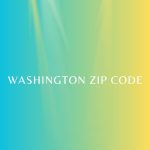Introduction
San Francisco, known for its iconic Golden Gate Bridge, cable cars, and vibrant neighborhoods, is a city rich in history and diversity. One aspect of this city that often goes unnoticed but plays a crucial role in its organization is its zip codes. Zip codes help define the different areas within San Francisco, impacting everything from mail delivery to real estate prices. Let’s dive into the world of San Francisco zip codes and understand their significance.
Understanding San Francisco Zip Codes
Brief History of Zip Codes in San Francisco
Zip codes were introduced in the United States in 1963 by the United States Postal Service (USPS). The term “ZIP” stands for “Zone Improvement Plan,” and the system was designed to make mail delivery more efficient. San Francisco, being a major city, was assigned several zip codes to cover its diverse neighborhoods.
How Zip Codes Are Structured
A standard zip code in the United States consists of five digits. In San Francisco, these zip codes range from 94102 to 94158, covering different parts of the city. Each zip code is associated with a specific area, making it easier to sort and deliver mail efficiently.
Central San Francisco Zip Codes
Downtown San Francisco (94102)
Downtown San Francisco, with the zip code 94102, is the bustling heart of the city. This area includes the Civic Center, where you’ll find City Hall and the San Francisco Opera. It’s a vibrant mix of business, culture, and history.
Nob Hill and Russian Hill (94109)
Nob Hill and Russian Hill, located in the 94109 zip code, are known for their stunning views and historic landmarks. These neighborhoods offer a blend of upscale living and classic San Francisco charm.
Financial District (94104)
The Financial District, marked by the 94104 zip code, is the business hub of San Francisco. Skyscrapers, banks, and corporate headquarters dominate this area, making it a key player in the city’s economy.
South of Market (94103)
The 94103 zip code covers the South of Market (SoMa) area, which is known for its tech startups, trendy restaurants, and vibrant nightlife. It’s a dynamic and rapidly evolving part of the city.
Western San Francisco Zip Codes
The Richmond District (94121)
The Richmond District, located in the 94121 zip code, is a residential area known for its diverse community and proximity to the Golden Gate Park. It’s a family-friendly neighborhood with a variety of local shops and eateries.
The Sunset District (94122)
The Sunset District, with the 94122 zip code, stretches along the western edge of the city. It’s known for its foggy weather, laid-back vibe, and beautiful Ocean Beach.
Ocean Beach and Golden Gate Park (94121)
Also part of the 94121 zip code, Ocean Beach and Golden Gate Park are major attractions in San Francisco. These areas offer recreational opportunities and scenic beauty, making them popular destinations for both locals and tourists.
Eastern San Francisco Zip Codes
Mission District (94110)
The Mission District, marked by the 94110 zip code, is one of the most culturally rich neighborhoods in San Francisco. It’s famous for its murals, Mexican cuisine, and vibrant nightlife.
Potrero Hill (94107)
Potrero Hill, covered by the 94107 zip code, offers stunning views of the city skyline and a mix of residential and commercial spaces. It’s a quiet neighborhood with a strong sense of community.
Bayview-Hunters Point (94124)
The 94124 zip code encompasses Bayview-Hunters Point, an area undergoing significant redevelopment. It’s known for its industrial past and efforts towards revitalization.
Northern San Francisco Zip Codes
Marina District (94123)
The Marina District, located in the 94123 zip code, is a picturesque neighborhood along the waterfront. It’s known for its trendy boutiques, restaurants, and views of the Golden Gate Bridge.
Presidio (94129)
The Presidio, with the 94129 zip code, is a historic park and former military base. It offers hiking trails, museums, and stunning vistas of the San Francisco Bay.
Southern San Francisco Zip Codes
Excelsior District (94112)
The Excelsior District, marked by the 94112 zip code, is a diverse and affordable neighborhood. It’s known for its community-oriented atmosphere and local businesses.
Glen Park (94131)
Glen Park, covered by the 94131 zip code, is a small neighborhood with a village-like feel. It features a mix of residential homes, parks, and quaint shops.
Ingleside (94132)
Ingleside, with the 94132 zip code, is home to San Francisco State University and a variety of residential and commercial areas. It’s a lively and evolving part of the city.
Unique Aspects of San Francisco Zip Codes
Zip Codes and Real Estate
In San Francisco, zip codes can significantly impact real estate prices. Areas like the Marina District (94123) and Nob Hill (94109) tend to have higher property values due to their desirable locations and amenities.
Cultural Significance of Zip Codes
Each zip code in San Francisco represents a unique cultural identity. For example, the Mission District (94110) is known for its Latino heritage, while Chinatown (94108) is the epicenter of Chinese culture in the city.
Zip Codes and Demographics
Zip codes also reveal demographic patterns. Neighborhoods like the Bayview-Hunters Point (94124) are known for their African American communities, while the Richmond District (94121) has a large Asian population.
The Role of Zip Codes in City Planning
How Zip Codes Affect City Services
Zip codes play a crucial role in city planning and the provision of services. They help in the allocation of resources for public services like schools, hospitals, and sanitation.
Zip Codes and Emergency Services
Emergency services rely heavily on zip codes for efficient response times. Knowing the exact zip code can make a significant difference in getting timely assistance during emergencies.
Conclusion
San Francisco’s zip codes are more than just numbers; they are an integral part of the city’s identity and organization. From influencing real estate prices to defining cultural enclaves, zip codes shape the way San Franciscans live and interact with their city. As San Francisco continues to evolve, its zip codes will remain a fundamental aspect of its structure.
FAQs
What is the most expensive zip code in San Francisco?
The most expensive zip code in San Francisco is typically 94123, covering the Marina District, known for its upscale housing and prime waterfront location.
How are zip codes assigned in San Francisco?
Zip codes in San Francisco are assigned based on geographic areas to facilitate efficient mail delivery and city planning.
Do zip codes affect property taxes in San Francisco?
Zip codes themselves do not directly affect property taxes, but property values within certain zip codes can influence the overall tax assessment.
Can zip codes change over time?
Yes, zip codes can change due to factors like urban development, population growth, and changes in postal routes.
How do zip codes impact daily life in San Francisco?
Zip codes impact daily life in many ways, including mail delivery, real estate decisions, access to services, and community identity.










